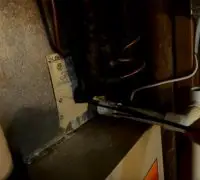Remember when your job site started using grabber cones and collapsible cones for the first time? Or when you were required to wear eyewear and hi-viz vests on the job site? For old school construction crews and managers, these are the only advancements you want to see in the industry.
But, when construction crews get a look at some of the improvements that have taken place and new technologies that have made their way into the industry, they’re genuinely amazed. Technology isn’t replacing the old way of doing things, but it’s making it much better and more efficient.
Technology has dramatically impacted the industry, and these are five ways in which it’s made a huge difference.
Page Table of Contents
Collaboration
Collaboration
Technology has made collaboration a must. When construction workers go rogue or don’t communicate on-site, it makes things far less operable and less efficient. Technology has given managers to maintain tabs on employees with up-to-date information.
Furthermore, collaboration software and technology offer workers and managers a better picture of the project from all phases and facets. Cloud-based platforms help employees know what they’re working on, let managers see what’s done, and gives a more updated picture of where a project stands.
Collaboration via the cloud has also given construction crews the ability to talk to team members who never step foot on the job site. Architects and construction managers can easily interact, where this might’ve never happened in the past.
Real-Time Visibility
Real-Time Visibility
Real-time information is the norm today. This goes from the top down to include
- IT
- Accounting
- Finance
- Project management
- Construction teams
And virtually anyone or anything else involved in the process. With software today, managers can input something into a system, and within one second, another manager (who’s working in ordering supplies) sees it. This maximizes efficiency.
In this example, if a crew is out of supplies, the supply manager can place an order immediately (and have it drop-shipped instantaneously). Less waste, more efficiency, and improved processes occur with real-time information.
We can even find many programs that can do all the ritual tasks automatically for sure. All that you have to do is to work in your inputs and the results will be over the top easily.
Mobile Devices
Mobile and Tablets
When would you ever imagine construction managers walking around with tablets and smartphones? Ten years ago, maybe even five years ago, this was unheard of. Today, it’s the norm. The internet has made things easier and helped increase safety on job sites.
Today we rely on the internet for everything. Technology has minimized errors greatly and helped construction teams communicate instantaneously, no matter where other crew members are, to improve on-site construction work.
Management Software
Management Software
Building information management (BIM) is an updated version of CAD software. It highlights everything about a worksite and construction project.
A 3D plan gives managers a way to pave the groundwork for a job, improve safety, and dictate exactly what supplies are needed, to prevent waste. This software helps reduce redundancies and prevent errors, which are costly and potentially dangerous.
In addition to that, we can even mention the AR. It hands a great stimulation for the future construction that you are having the intention to work in easily. Like that, you can see previously what your projects look like before the phases of real implantation.
Such facts can handle you the best mechanism of money and time optimization. You will have the best boost in your professional life if you use such revolutionary augmented reality technology for sure.
It shows managers how a project will look with or without a particular element. In addition, with instantaneous feedback, clients can give their input as well, if they like/don’t like something they see in the 3D model layout.
We can find a huge competition in the field of the construction industry where technology is embedded. We can find AutoCAD, Maya and many other leaders in the field. In each time, we witness a new technology that handles the best outcomes in our daily life. Especially when it comes to giant building construction, many optimizations are taking place easily due to the developed plugins and functionalities developed within such giant programs.
Health and Safety
Health and Safety
It’s not just the new software that allows workers to communicate or to develop a 3D printed model of a project; technology has helped improved safety and health on job sites as well. Safety glasses, warm clothing, headsets, surveillance monitoring, and other wearable devices, allow workers to avoid dangers that were prevalent in years past.
Even in the world of echo diagnose, technology has become more accurate than ever before. You will be able to bring the best quality of results when we talk about the diagnostics statistics.
Since the AI system embedded in such X-RAY devices are over the top of expectations. You will have very accurate results. Even the construction companies dedicated to the health and safety devices are working on such technology in order to get the fast and most accurate results for their diagnoses easily.
All that you have to do is to check such devices in some developed countries and you will be fascinated about the changes.
VR even helps with training so that employees learn how to react in a potentially dangerous scenario. Better gear and equipment, along with real-time updates provided to construction managers, helps increase safety for all employees and reduce major workplace accidents, which were occurring on a regular basis only a few years ago without the latest technologies in place.
Not only is the construction industry in a better place with new technology, so are construction workers are crews. They’re safer, they can focus on their areas of specialization, and construction workers can get things done far more efficiently.
These are just a few of the technological advancements that have made their way into construction. The industry is bound to see far more changes as 2020 approaches, and into the future, which will further impact safety, design, and the manner in which work is done on-site.



